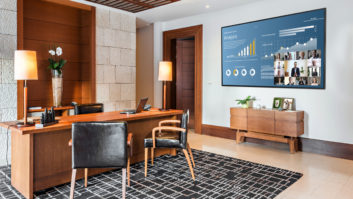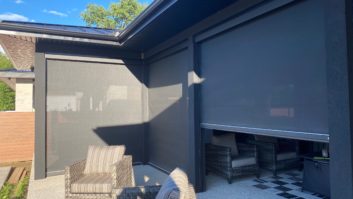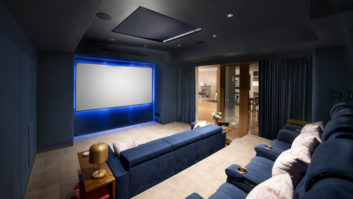By Todd Anthony Puma
If you are not incorporating shading solutions into your product offering in some way, shape, or form, you need to start doing it ASAP. Shading is a solution that clients ask for, is a complete wow factor, and is a great stepping stone into complete home automation. While explaining the benefits of automated lighting can be a challenge with many clients, I have yet to encounter a client who does not immediately understand and buy into the benefits of automated shading. Having the shades adjust based on time of day, to automatically drop for movie time, and to be a part of the kids’ wake up scene are three things clients fully grasp immediately. And there is nothing cooler for guests to see than for the shades to open up at sunset automatically or to drop when the TV is turned on.

Pros who offer shading will tell you that they can not imagine running a successful, profitable business without shading. There not much else in our industry with such a high price point (approximately $2000 per shade), generous margins (50 points or more), and customer acceptance. To top it all off, there is absolutely no reason to not offering shading. The way I see it, there are two ways to offer shading depending on your appetite:
1. Adding Shading to Your Product Offering
This is what most pros think of when it comes to shading. Become a dealer for Somfy, Lutron, Q-Motion, Crestron Shades, or another product line.
Benefits:
- You keep all of the margin on the shades
- You maintain complete control of the process
- If you are a Crestron dealer and sell Crestron Shades, you have a larger spend and greater VIR with Crestron
2. Partnering with a Shading Professional
I know a couple of home tech pros (HTP) who have gone this route and swear by it. Some have agreements with the shading professionals to profit share on the projects, so they still get 20 percent or so of the profit they would have earned had they sold and installed the shades themselves. Plus they charge to integrate the shades into the control system.
Benefits
- No responsibility for fabric choices, colors, openness
- No need to maintain a showroom or fabric books
- Not working with contractors on light gaps, shade pockets, or other details and specs a typical HTP is not familiar with
- Shading pros can customize product to the client’s exact needs – roman shades, louvres, draperies, and other fabrications we are just not capable of
- Ability to offer/support multiple product lines as you are not tied to a single manufacturer
- No fabric care or cleaning services to offer or support
- Shared margin with shading professional can be arranged
- Not responsible for failed motors, battery changes, or other maintenance
Also by Todd Anthony Puma: 3 Networking Tips and Tricks
As you can see, there are a lot of negatives you can avoid by partnering with someone. The big disadvantage of that is a reduced or non-exist profit stream and a bit more coordination required in the sales and commissioning process. Depending on how involved you want to be, you can either refer clients to the shading professional, in which case you have no maintenance or project responsibility, or you can subcontract the work out, in which case you make more profit, but take on more responsibility. It is a sliding scale of profits and responsibility, and there are multiple points along that scale for all different business models.
With the above strategies, there is no reason to avoid shading. Give your clients what they want, what they will show off to their friends, and what will add profit to your bottom line.







